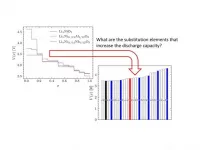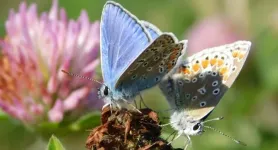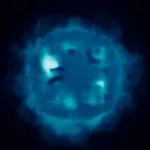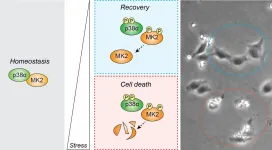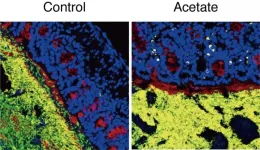Mechanisms to separately regulate synaptic vesicle release and recycling
Interactions of two voltage-gated calcium channels and a pump enable separate control of exocytosis and endocytosis at chemical synapses
2021-07-19
(Press-News.org) Chemical synapses transmit information within the nervous system. When a presynaptic cell is electrically excited, synaptic vesicles fuse with the presynaptic membrane causing messenger substances within the vesicles to be released into the synaptic cleft. These then bind to receptors in the postsynaptic cell where they trigger an electrical signal once again. The temporal and spatial sequence of the incoming signals determines how information is processed and transmitted in the brain. In order to sustain their function in the long term, chemical synapses need to recycle synaptic vesicles to make them available for renewed signal transmission. Professor Carsten Duch and Professor Martin Heine and their respective research groups at Johannes Gutenberg University Mainz (JGU) are investigating how the release and recycling of synaptic vesicles are coordinated. "Exocytosis and endocytosis rates at chemical synapses need to be coordinated to achieve reliable signal transmission in the brain," the biologists explained. Together with Dr. Ulrich Thomas, group leader at the Leibniz Institute for Neurobiology in Magdeburg, Duch and Heine have revealed in a PNAS paper how spatiotemporally separated presynaptic calcium signals independently regulate exocytosis and endocytosis of synaptic vesicles, i.e., their release and recycling.
Co-existence of different types of voltage-gated calcium channels at the presynapse
At chemical synapses, incoming electrical impulses are converted into chemical signals and relayed on to the next cell. The process entails calcium ions first flowing through voltage-dependent membrane channels into the presynapse, i.e., the upstream nerve cell that transmits the signal to the postsynaptic cell. This calcium influx is tightly constrained in both time and space and results in exocytosis of synaptic vesicles from a specialized vesicle reservoir. Presynaptic calcium signals also regulate synaptic vesicle recycling, but here the temporal and spatial requirements are different. One unresolved question is how presynaptic electrical activity can lead to calcium signals with different temporal and spatial profiles in the presynaptic terminal.
By combining genetic modifications with electrophysiological and optophysiological measurements at the neuromuscular synapse of the Drosophila melanogaster genetic model organism, the research team was able to demonstrate that the presynapse harbors two different types of voltage-gated calcium channels, Cav2 and Cav1. These, however, were found to be spatially segregated. Both types of channels open when electrical signals arrive, but only Cav2 channels, which reside in active zones of the presynapse, are required for exocytosis of synaptic vesicles. Cav1 channels are situated outside active zones and augment endocytosis of synaptic vesicles via activity-dependent calcium influx. Thus, knockdown of Cav2 by means of genetic manipulation prevents synaptic transmission, whereas knockdown of Cav1 decreases the rate of synaptic vesicle endocytosis, thereby enhancing synaptic depression during sustained activity. This is how calcium signals mediated by two different populations of largely independent voltage-gated calcium channels regulate two essential functions of the presynapse in response to neuronal activity, namely the release and recycling of synaptic vesicles.
Functional separation of Cav1 and Cav2 by means of a calcium pump
A key question was how calcium signals through different channels could be functionally separated at the nanometer scale of the presynaptic terminal, because calcium after all is a highly diffusible intracellular messenger. According to the researchers, different vital functions of calcium signals through Cav1 and Cav2 channels are separated by a membrane-anchored calcium buffer. Cav2 channels are found within presynaptic active zones at distances of 70 to 140 nanometers from readily releasable synaptic vesicles. This distinct localization of Cav2 results in the emergence of temporally and spatially tightly regulated calcium signals within so-called nano-domains during presynaptic electrical activity, and these are essential for temporally precise synaptic transmission. Cav1 localizes around active zones, in theory allowing calcium influx simultaneously through both types of channels to result in mixed signals with no measurable delay. However, mixed signals of this type are prevented by the plasma membrane calcium pump (PMCA). PMCA is located outside active zones and isolates them from the dynamic regulation of endocytosis achieved by Cav1-mediated calcium influx. Because Cav1, Cav2, and PMCA have been identified also at central synapses in the brains of mammals, these proteins may represent a conserved functional triad for separate activity-dependent regulation of exocytosis and endocytosis of synaptic vesicles.
Calcium channels and the regulation of essential synaptic functions
In the future, Duch's and Heine's research groups will continue to explore the interactions of calcium channels and their associated molecules at the presynapse. Calcium signals in the presynaptic terminal regulate other essential synaptic functions beyond exocytosis and endocytosis. These include the regulation of synaptic vesicle movements between distinct specialized reservoirs as well as the control of fixed synaptic transmission strengths, which are restored by compensatory mechanisms after perturbation. This homeostatic synaptic plasticity is essential for reliably processing information in the brain. As part of a project within Collaborative Research Center 1080 on Molecular and Cellular Mechanisms in Neural Homeostasis, Duch's and Heine's groups are investigating how spatiotemporally separated presynaptic calcium signals independently control exocytosis and endocytosis, the transport of vesicles between different reservoirs, and synaptic homeostasis. "Calcium signals are extremely well suited to precisely adapt a variety of vital synaptic functions to differing neuronal activities, but we are only just starting to work out the mechanisms that independently regulate these functions," Duch and Heine commented on their neurobiology research.
INFORMATION:
Related links:
https://idn.biologie.uni-mainz.de/ - JGU Institute of Developmental Biology and Neurobiology (IDN) ;
https://www.blogs.uni-mainz.de/ftn-eng/third-party-funds/collaborative-research-centre-1080-molecular-and-cellular-mechanisms-of-neural-homeostasis/ - Collaborative Research Center 1080: Molecular and Cellular Mechanisms of Neural Homeostasis
Read more:
https://www.uni-mainz.de/presse/aktuell/11867_ENG_HTML.php - press release "Calcium channel subunits play a major role in autistic disorders" (22 July 2020) ;
https://www.uni-mainz.de/presse/aktuell/11315_ENG_HTML.php - press release "Nanodomains are involved in neuronal communication" (30 April 2020) ;
https://www.uni-mainz.de/presse/aktuell/395_ENG_HTML.php - press release "Synapses compete for neuronal building blocks" (9 Feb. 2017) ;
https://www.uni-mainz.de/presse/20789_ENG_HTML.php - press release "Fruit fly motoneuron dendrites are not essential for basic functions" (22 Jan. 2015)
ELSE PRESS RELEASES FROM THIS DATE:
2021-07-19
"The project's main objective is to integrate a certain degree of automation, so that an operator can control a small fleet of up to 10 drones from a single ground station," says Luis E. Moreno, LABYRINTH's coordinator and researcher at the UC3M's Robotics Lab. "The idea is that the operator indicates the mission to be undertaken (for example, monitoring traffic in a particular area) and the system automatically converts this mission into a set of routes that each drone has to follow, automatically calculating alternative routes when necessary," he explains. In addition ...
2021-07-19
The economic and environmental pros and cons of melting Arctic ice creating shorter shipping routes through the polar region are weighed up in ground-breaking research from UCL experts in energy and transport.
They conclude that policy makers must properly assess the environmental trade-offs and costs in addition to the commercial benefits and opportunities in Arctic shipping. The authors also want to see more incentives to drive technological developments that will accelerate the uptake of green fuels and technologies.
The Arctic is the fastest-warming region on the planet.
Shorter Arctic shipping routes, which mean less fuel used are already used by a handful of ships, when areas of the Arctic ice melt ...
2021-07-19
Ishikawa, Japan - Powering everything from smartphones to electric cars, lithium-ion batteries (LIBs) have evolved markedly with advances in technology and revolutionized our world. The next step in the progress of technology is developing even better batteries to power electronic devices for longer durations. One promising technique for increasing battery performance involves the atomic substitution of positively charged ions or "cations" in the cathode material. However, doing so systematically for different substituent cations to determine the ideal ones experimentally is complex and expensive, leaving us with simulations as the only viable option for narrowing down the choices.
Several studies have reported an improved battery life and ...
2021-07-19
This summer, if you see a butterfly with wings that are blue on top with orange spots underneath, you may have crossed paths with a male European Common Blue (or Polyommatus icarus), a newly introduced species in Canada.
Could it be a fluke? Probably not, according to a group of researchers from the University of Ottawa who have taken a close look at this captivating blue creature. They are in fact the first to study its ecology.
"The results of our study suggest that the Polyommatus icarus (P. icarus) could become widespread in the future since it prefers urban areas," said uOttawa PhD student Stephanie Rivest, who is the first ...
2021-07-19
The final stage of cataclysmic explosions of dying massive stars, called supernovae, could pack an up to six times bigger punch on the surrounding interstellar gas with the help of cosmic rays, according to a new study led by researchers at the University of Oxford. The work will be presented by PhD student Francisco Rodríguez Montero today (19 July) at the virtual National Astronomy Meeting (NAM 2021).
When supernovae explode, they emit light and billions of particles into space. While the light can freely reach us, particles become trapped in spiral loops by magnetic shockwaves generated during the explosions. Crossing back and forth through shock fronts, these particles are accelerated almost to the speed of light and, on escaping the supernovae, are thought ...
2021-07-19
Living organisms are often exposed to stress stimuli generated either by external or internal factors, and they need to respond accordingly. At a cellular level, stress usually triggers the activation of survival pathways that contribute to the recovery of cell homeostasis. However, when stress is too high, a process of cell death is initiated that eliminates the damaged cell.
Scientists led by ICREA researcher Dr. Angel Nebreda, head of the Signalling and Cell Cycle laboratory at IRB Barcelona, have identified an important role of the p38-MK2 pathway in determining cell fate in response to stress.
"Our ...
2021-07-19
Computer vision technology is increasingly used in areas such as automatic surveillance systems, self-driving cars, facial recognition, healthcare and social distancing tools. Users require accurate and reliable visual information to fully harness the benefits of video analytics applications but the quality of the video data is often affected by environmental factors such as rain, night-time conditions or crowds (where there are multiple images of people overlapping with each other in a scene). Using computer vision and deep learning, a team of researchers led by Yale-NUS College Associate Professor of Science (Computer Science) Robby Tan, who is also from the National University of Singapore's (NUS) Faculty of Engineering, ...
2021-07-19
Researchers at the RIKEN Center for Integrative Medical Sciences (IMS) have discovered that acetate, a major metabolite produced by some intestinal bacteria, is involved in regulating other intestinal bacteria. Specifically, experiments showed that acetate could trigger an immune response against potentially harmful bacteria. The findings, published in the scientific journal Nature, will lead to the development of new ways to regulate the balance of intestinal bacteria.
You may be surprised to know that 40 trillion important bacteria live in our intestines. They help keep us healthy by producing essential nutrients and eliminating foreign pathogens. On the other ...
2021-07-19
Some COVID-19 patients who experience acute respiratory failure respond by significantly increasing their respiratory effort - breathing faster and more deeply
There is concern among some doctors that this level of respiratory effort can lead to further damage to these patients' lungs.
Working with an international team of leading intensive care clinicians, engineering researchers at the University of Warwick have used computational modelling to provide new evidence that high respiratory efforts in COVID-19 patients can produce pressures and strains inside the lung that can result in injury.
The impact of high breathing efforts on the lungs of patients suffering with acute respiratory failure due to COVID-19 ...
2021-07-19
The carbon-hydrogen bonds in alkanes--particularly those at the ends of the molecules, where each carbon has three hydrogen atoms bound to it--are very hard to "crack" if you want to replace the hydrogen atoms with other atoms. Methane (CH(4)) and ethane (CH(3)CH(3)) are made up, exclusively, of such tightly bound hydrogen atoms. In the journal Angewandte Chemie, a team of researchers has now described how they break these bonds while forming new carbon-nitrogen bonds (amidation).
If it were possible to easily break the C-H bonds in hydrocarbons, it would be possible to synthesize complex organic ...
LAST 30 PRESS RELEASES:
[Press-News.org] Mechanisms to separately regulate synaptic vesicle release and recycling
Interactions of two voltage-gated calcium channels and a pump enable separate control of exocytosis and endocytosis at chemical synapses

